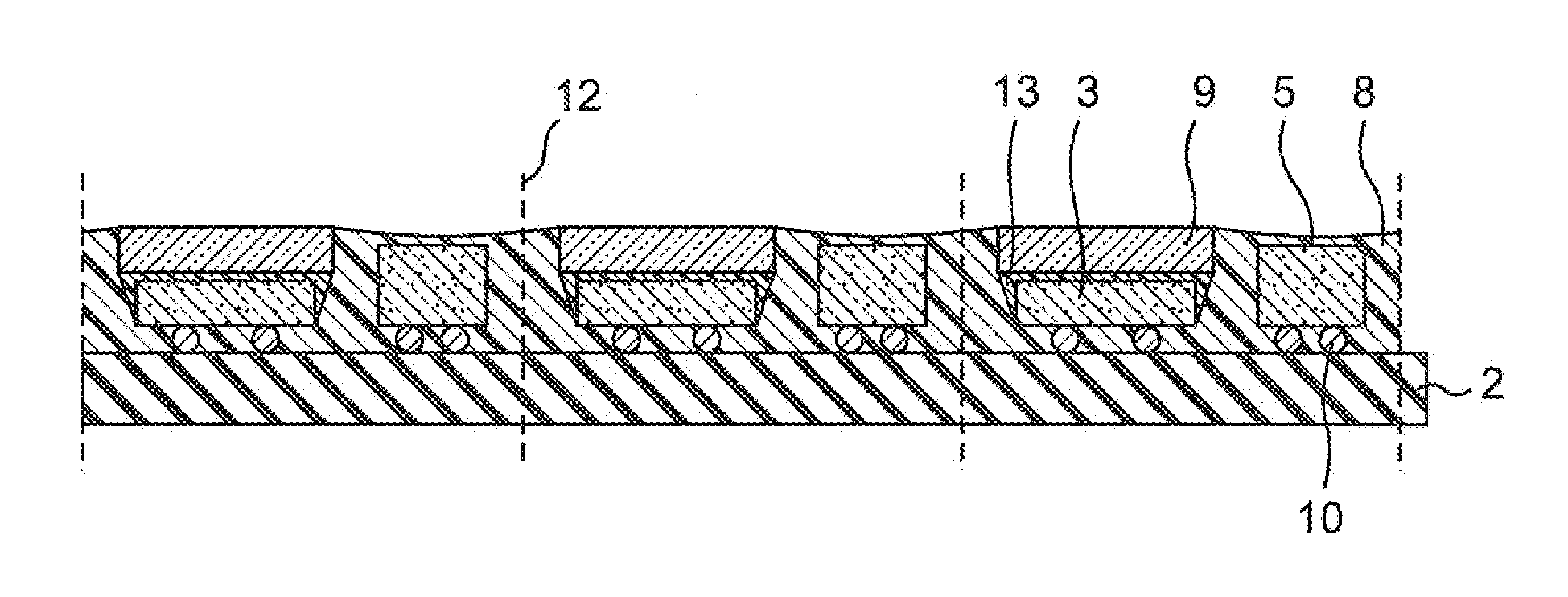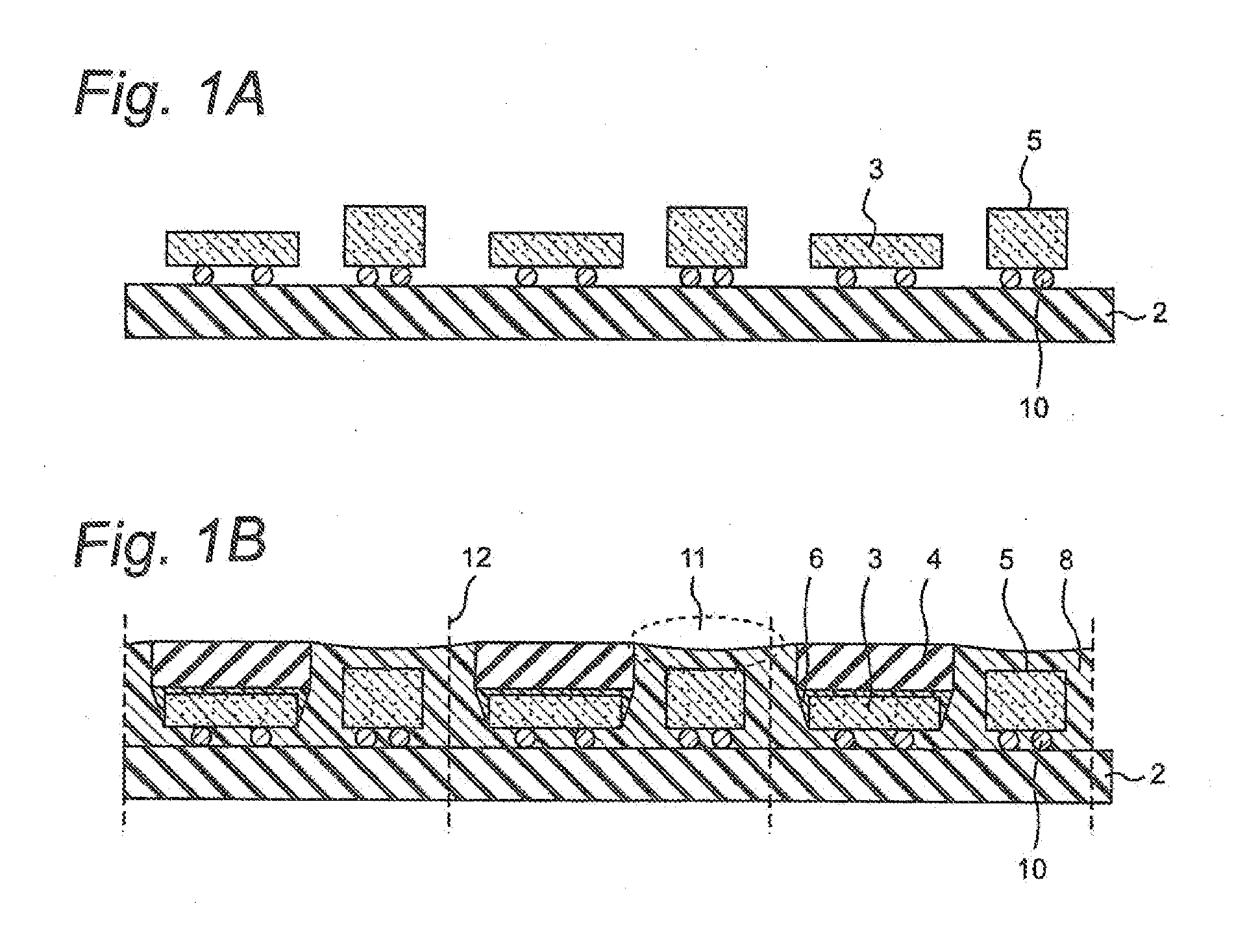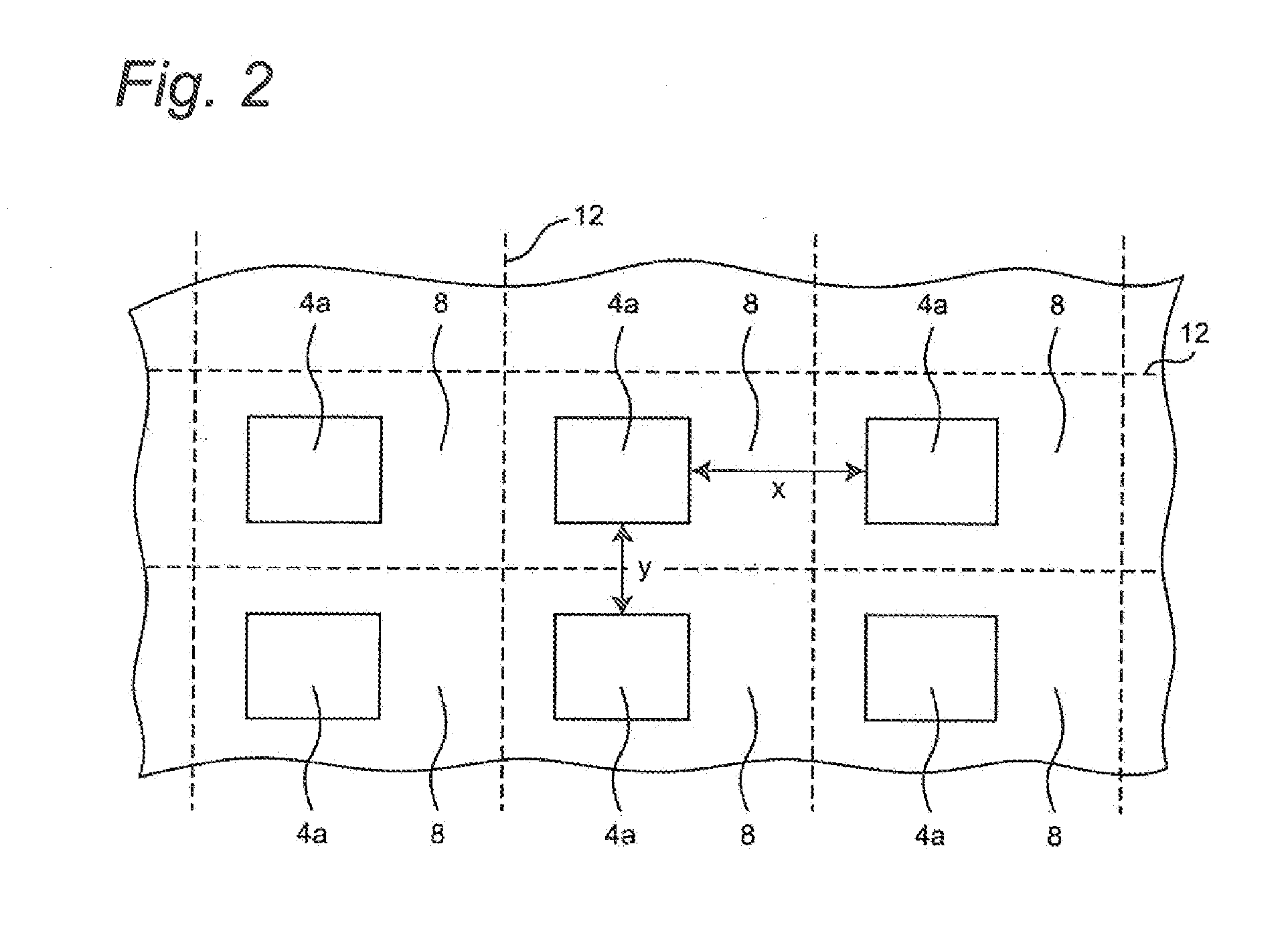Method for manufacturing light emitting device and light emitting device
a technology of light emitting devices and manufacturing methods, applied in semiconductor devices, semiconductor/solid-state device details, electrical devices, etc., can solve problems such as degradation of light quality, and achieve the effect of improving light-extraction efficiency and increasing the thickness of the reflective layer
- Summary
- Abstract
- Description
- Claims
- Application Information
AI Technical Summary
Benefits of technology
Problems solved by technology
Method used
Image
Examples
first embodiment
[0036]A method for manufacturing a light emitting device according to this embodiment includes the steps of: disposing a plurality of light emitting elements in a matrix over an aggregate substrate, and disposing a semiconductor element other than the light emitting element in between the adjacent light emitting elements in one of column and row directions of the light emitting elements disposed in the matrix; after disposing phosphor layers over the upper surface of the light emitting elements, disposing a reflective resin to cover the semiconductor elements along the side surfaces of the light emitting elements and the side surfaces of the phosphor layers; and simultaneously cutting the reflective resin and the substrate disposed in between the adjacent light emitting elements in one direction of the column and row directions and between the light emitting element and the adjacent semiconductor element in the other direction so as to include at least one light emitting element and...
second embodiment
[0062]The phosphor layer for use is produced by molding a mixture of the phosphor material and binder, such as resin or glass, into a plate shape. In order to adjust the light emission from the light emitting device to a desired chromaticity, it is often necessary to increase the amount of phosphor material contained in the phosphor layer. Methods for increasing the amount of phosphor material include increasing the concentration of phosphor material, and increasing the thickness of the phosphor layer. As the concentration of some phosphor materials selected is increased, the phosphor layers made of the phosphor material might have its strength reduced. When the thickness of the phosphor layer is increased, the thermal conductivity of the phosphor layer is reduced. As a result, heat generated by the phosphor in the light conversion is stored in the phosphor layer, which might promote thermal degradation of the phosphor or binder, thereby reducing the intensity of fluorescence. Howev...
third embodiment
[0090]FIG. 7 is a schematic cross-sectional view showing the structure of a light emitting device C in this embodiment. The light emitting device C has the same structure as that of the light emitting device of the second embodiment except that the adhesive layer of the second embodiment does not exist in the third embodiment, that a phosphor layer 13 contains a thermosetting binder, and that the phosphor layer 13 is fixed directly to the light emitting element 3.
[0091]FIGS. 8A, 8B, and 8C are exemplary diagrams showing one example of steps of a manufacturing method of the light emitting device C in this embodiment. The manufacturing method of this embodiment can manufacture the light emitting device in the same way as that of the second embodiment except that the phosphor layer containing thermosetting binder is fixed directly to the light emitting element 3 without forming the adhesive layer.
[0092]FIG. 8A shows the step of disposing the light emitting elements over the substrate. ...
PUM
 Login to View More
Login to View More Abstract
Description
Claims
Application Information
 Login to View More
Login to View More - R&D
- Intellectual Property
- Life Sciences
- Materials
- Tech Scout
- Unparalleled Data Quality
- Higher Quality Content
- 60% Fewer Hallucinations
Browse by: Latest US Patents, China's latest patents, Technical Efficacy Thesaurus, Application Domain, Technology Topic, Popular Technical Reports.
© 2025 PatSnap. All rights reserved.Legal|Privacy policy|Modern Slavery Act Transparency Statement|Sitemap|About US| Contact US: help@patsnap.com



